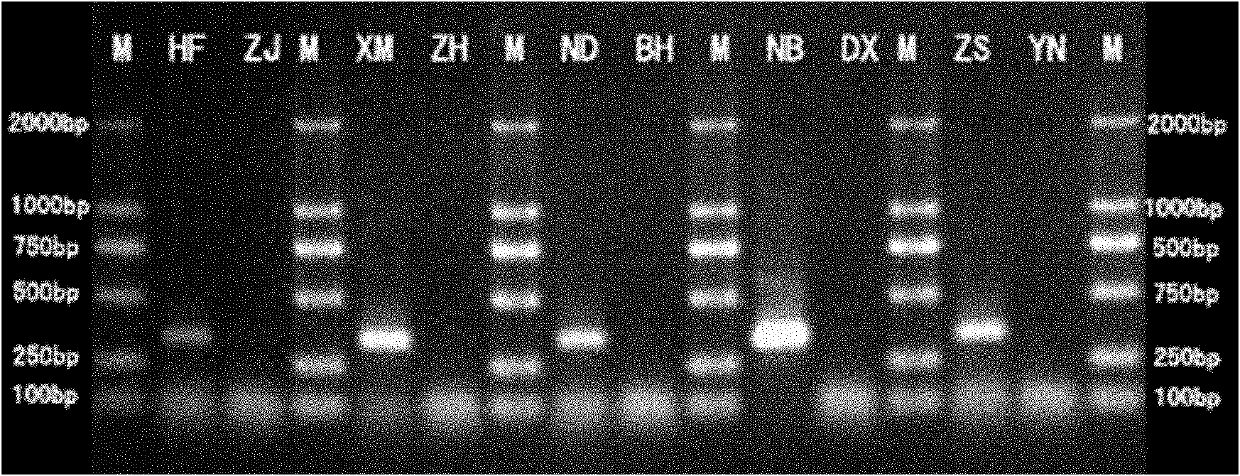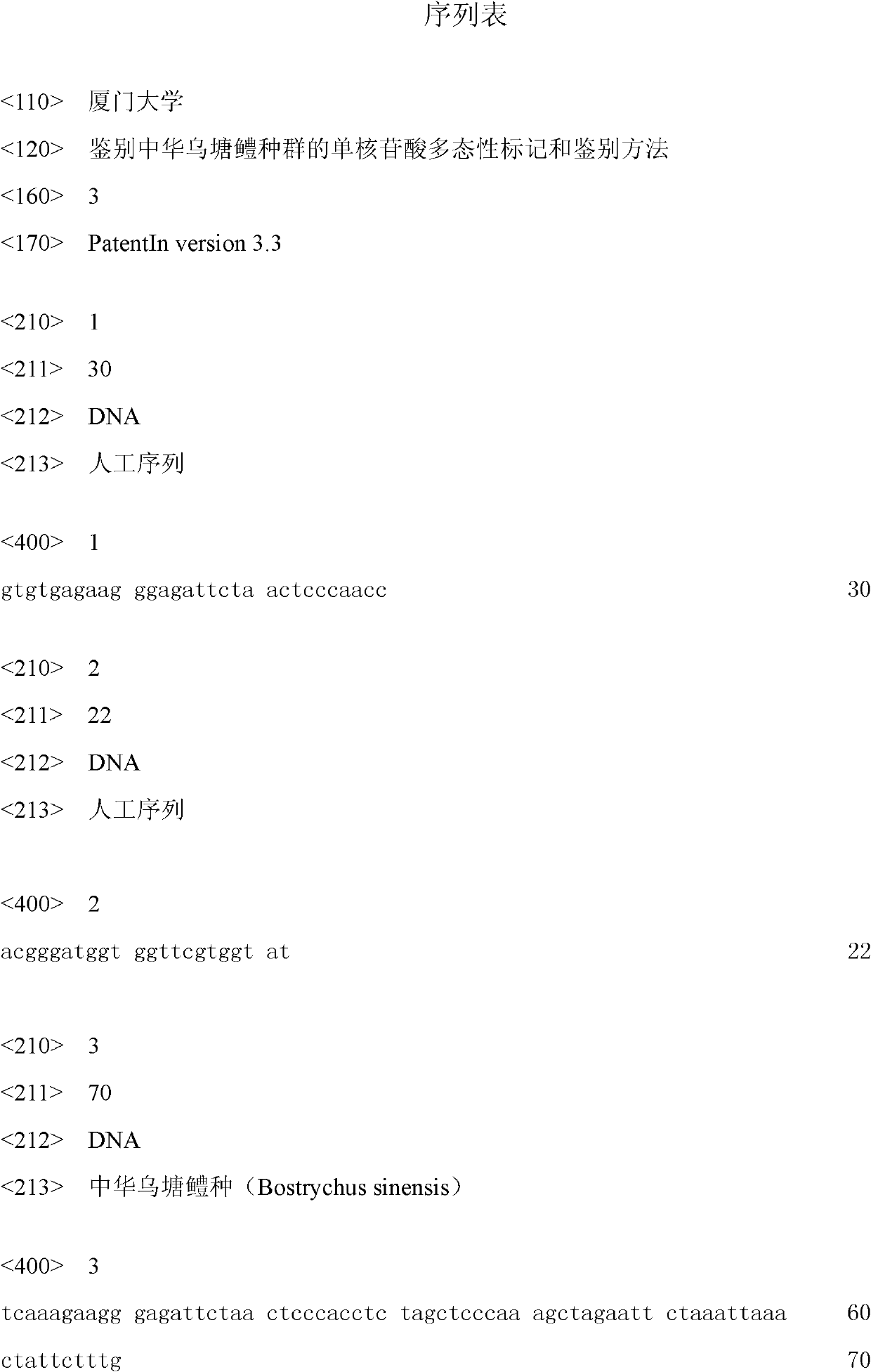Marker and method for identifying single nucleotide polymorphism of bostrichthys sinensis group
A technology for the populations of Channa sinensis and its population, applied in the field of single nucleotide polymorphism markers and identification for identifying populations of Channa sinensis
- Summary
- Abstract
- Description
- Claims
- Application Information
AI Technical Summary
Problems solved by technology
Method used
Image
Examples
Embodiment 1
[0023] 1) Select the Chinese snakeheads from Zhanjiang (south of the Pearl River estuary) and Haifeng (north of the Pearl River estuary), and use the phenol-chloroform extraction method according to the conventional method (see "Molecular Cloning Experiments" translated by Huang Peitang et al. Guide" (Third Edition), Science Press, September 2002) to extract the DNA of S. sinensis;
[0024] 2) Design and synthesize a pair of selective amplification primers
[0025] tRNA-proH: 5'-gtgtgagaag ggagattcta actcccaacc-3'
[0026] tRNA-proL: 5'-acgggatggt ggttcgtggt at-3';
[0027] Carry out two PCR amplification reactions on the DNA of Channa sinensis:
[0028] The first PCR amplification, that is, the positive detection reaction PCR amplification program was: pre-denaturation at 95°C for 5 min; each cycle of denaturation at 95°C for 30 s, annealing at 58°C for 30 s, and extension at 72°C for 30 s, for a total of 35 cycles.
[0029] The second PCR amplification, that is, the selec...
Embodiment 2
[0033] Similar to Example 1, the difference is that the Chinese snakehead from the south of the Pearl River estuary was taken from Zhuhai; the sample from the north of the Pearl River estuary was selected from Xiamen. When electrophoresis test results, under the premise of ensuring that the positive test reaction is normal (that is, there is a positive amplification product), in the selective PCR amplification, if there is an amplification product of 330bp, the DNA sample is from Xiamen. If there is no amplification product, the DNA sample is from Zhuhai (see figure 1 with 2 ).
Embodiment 3
[0035] Similar to Example 1, the difference is that the Snakena sinensis in the south of the Pearl River estuary was taken from the North Sea; the sample in the north of the Pearl River estuary was taken from Ningde. When electrophoresis test results, under the premise of ensuring that the positive test reaction is normal (that is, there is a positive amplification product), in the selective PCR amplification, if there is an amplification product of 330bp, the DNA sample is from Ningde, if there is no amplification product, the DNA sample comes from the North Sea (see figure 1 with 2 ).
PUM
 Login to View More
Login to View More Abstract
Description
Claims
Application Information
 Login to View More
Login to View More - R&D
- Intellectual Property
- Life Sciences
- Materials
- Tech Scout
- Unparalleled Data Quality
- Higher Quality Content
- 60% Fewer Hallucinations
Browse by: Latest US Patents, China's latest patents, Technical Efficacy Thesaurus, Application Domain, Technology Topic, Popular Technical Reports.
© 2025 PatSnap. All rights reserved.Legal|Privacy policy|Modern Slavery Act Transparency Statement|Sitemap|About US| Contact US: help@patsnap.com



